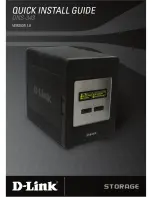
Configuring the 100/10 Ethernet Adapter
Fast Ethernet Cabling
The 100BASE-TX specifications support 100 Mbps transmission over
two or four pairs of twisted-pair Ethernet cabling. In two-pair
cabling, one pair of cables is used for transmission, and the second
is used for reception and collision detection.
Because a 125 MHz frequency is used on the wire, 100BASE-TX
requires Category 5 cabling.
Segment lengths are limited to 100 meters (328 feet) with
100BASE-TX for signal timing reasons.
Fast Ethernet Hubs
New hubs are available to support a variety of Fast Ethernet LAN
configurations. These hubs can be divided into two basic types:
shared and switched. 100/10 PCI Ethernet adapters can be used
with either type of hub for 10 Mbps or 100 Mbps operations.
Shared Hubs
In a shared network environment, servers are connected to hubs. A
repeater is built into each port of the hub. All ports of the repeater
hub share a fixed amount of bandwidth, or data capacity. A 100
Mbps shared hub means that all nodes on the hub must share the
100 Mbps or bandwidth. As stations are added to the hub, the
effective bandwidth available to any individual station becomes
smaller.
All nodes must operate at the same speed, either 10 Mbps or 100
Mbps. Fast Ethernet repeaters provide 100 Mbps of available
bandwidth, ten times more than what is available with a 10 BASE-T
repeater.
Repeaters use a well established, uncomplicated design, making
them highly cost-effective for connecting workstations in a
workgroup.
40
PC Server 315 User's Handbook
















































